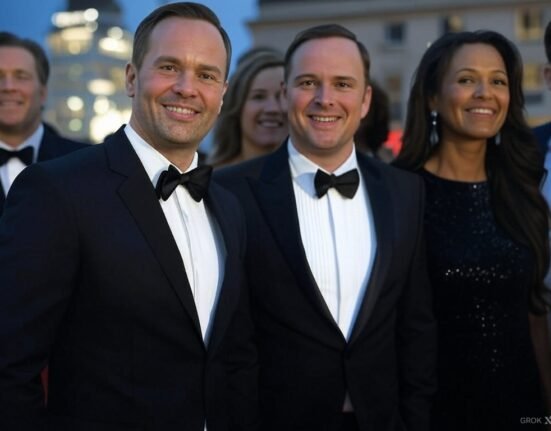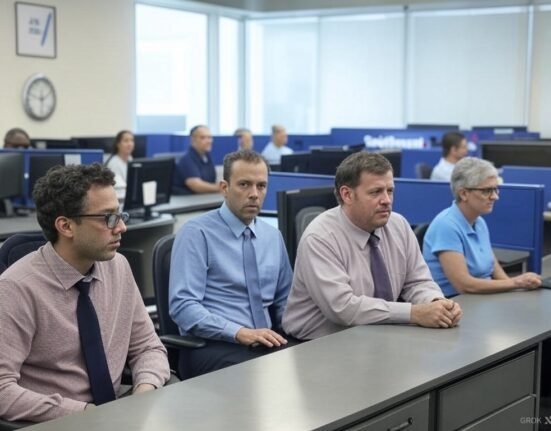The Consumer Electronics Show (CES) 2024 is poised to be a significant event on the global technology calendar, taking place in Las Vegas from January 9 to January 12. As one of the most important trade shows in the world, CES serves as a platform for showcasing groundbreaking innovations in consumer electronics and technology. The event attracts industry professionals, innovators, and enthusiasts from across the globe, creating an environment that fosters collaboration and the sharing of ideas.
CES 2024 is expected to focus on the theme of “Technology for the Future,” emphasizing how electronic advancements can spark positive change in various aspects of daily life. This year, attendees will encounter a plethora of emerging technologies that emphasize the potent combination of artificial intelligence, automation, and connectivity. The integration of mixed reality (MR) into everyday experiences is a significant highlight, as it transforms how consumers interact with digital environments and physical spaces.
Participants at CES 2024 can anticipate major trends encompassing smart home devices, wearables, and health technology, demonstrating how these innovations cater to personalized user experiences. Additionally, with the rise of remote work and online collaboration, solutions in communication technology will be showcased, exemplifying how companies are adapting to evolving work dynamics. Furthermore, prominent companies and startups will unveil ingenious control systems designed to enhance the user experience across various platforms, enabling more intuitive interactions.
In essence, CES 2024 represents the confluence of tradition and innovation, highlighting the ongoing evolution of consumer technology. Attendees will not only witness the presentation of transformative products but also engage in discussions regarding the ethical implications and future trajectories of these advancements, setting the stage for a new era in consumer electronics.
Overview of MR Technology
Mixed reality (MR) is an advanced technological framework that bridges the gap between the physical and digital worlds, resulting in immersive experiences that redefine interaction with our environments. MR can be understood as a combination of both augmented reality (AR) and virtual reality (VR), enabling users to engage with digital content superimposed onto their real-world surroundings. This innovative approach has garnered attention across various industries, prompting the exploration of its extensive potential.
The genesis of MR technology can be traced back to the evolution of AR and VR, which gained traction in the late 20th century. Originally, these technologies were primarily utilized in gaming and entertainment. However, advancements in hardware and software have driven MR to expand its boundaries, finding relevance in diverse sectors. By integrating real-time data with digital elements, mixed reality offers users the ability to manipulate digital content in a way that feels authentic and engaging. This evolution marks a significant milestone in how we interact with technology.
One of the most compelling aspects of MR technology is its versatility. In gaming, it creates captivating gameplay environments that blend the player’s physical space with virtual elements, providing a unique gaming experience. In education, MR facilitates interactive learning experiences, allowing students to visualize complex concepts in a more tangible manner. Healthcare professionals utilize MR for training simulations and remote assistance, enhancing both skill development and patient care. Similarly, the retail sector employs MR to improve customer engagement through virtual fitting rooms and immersive product displays.
As MR technology continues to evolve, its applications will likely expand further, addressing challenges across various sectors and revolutionizing the way we interact with both the digital sphere and our physical surroundings. The potential of MR to enhance experiences and improve efficiencies underscores its significance in today’s rapidly advancing technological landscape.
Unveiling the Innovative MR Screen
The innovative MR screen technology showcased at CES 2024 marks a significant advancement in display capabilities, broadening the horizons of mixed reality environments. Central to its design is an exceptional resolution that elevates user experience, boasting a pixel density that surpasses competing technologies. This ensures that users encounter stunning visuals with unparalleled clarity, making virtual and augmented realities more immersive than ever.
Integrating OLED technology, the new MR screen offers vibrant color ranges and deep blacks, enhancing the visual experience and allowing for a more lifelike depiction of virtual environments. In contrast to traditional LCD screens, which often struggle with color accuracy and viewing angles, the OLED-based MR screen excels in delivering stunning imagery from various perspectives. This is particularly crucial for applications such as gaming, design, and educational tools, where an accurate visual representation is essential for user engagement.
Another impressive feature of this MR screen is its interactive capabilities, utilizing advanced touch and gesture recognition. This functionality empowers users to engage seamlessly with digital content, fostering a more intuitive interaction that goes beyond basic input methods. In addition to the touch-sensitive surface, the screen is compatible with various input devices, such as styluses and hand-tracking technologies, allowing for versatile applications in both professional and consumer settings.
The sleek, ergonomic design also plays a vital role in enhancing user experience, with a lightweight structure that ensures prolonged use without discomfort. With an ultra-thin bezel and a modern aesthetic, this MR screen is not just functional but also appealing to the eye, making it an attractive addition to both home and office environments. Overall, the innovative MR screen technology presented at CES 2024 sets a new standard in display innovation, combining exceptional performance with user-centered design.
Control Technology Breakthroughs
The emergence of mixed reality (MR) has been significantly bolstered by advancements in control technologies. These breakthroughs have markedly improved how users interact with MR environments, culminating in a more immersive and intuitive experience. Gesture control, for example, has evolved from rudimentary features to sophisticated systems that can translate complex hand movements into actionable commands within the MR space. Utilizing advanced tracking sensors and machine learning algorithms, gesture control now allows users to manipulate virtual objects with remarkable fluidity, reducing the reliance on traditional input devices.
Moreover, voice activation technology has also seen notable enhancements. Users can now engage with mixed reality applications through natural language processing, facilitating a more conversational interaction model. This innovation allows for multi-tasking; users can issue commands verbally while simultaneously engaging with the virtual environment, streamlining tasks and enhancing overall productivity. The combination of these technologies contributes to a natural flow of interaction that is often cited as a reason for increased user engagement in MR experiences.
Furthermore, additional innovative interfaces, such as eye-tracking and haptic feedback, are making significant contributions to the field. Eye-tracking technology monitors users’ gaze to determine what they focus on, allowing for more responsive interfaces that adapt to users’ attention. Haptic feedback systems provide tactile responses, deepening the illusion of physical interaction within the virtual realm. Together, these technologies promote a user experience that melds seamlessly with natural behaviors, making MR more accessible and effective.
As these control technologies continue to advance, they promise to further elevate the standard of mixed reality interactions, creating richer, more engaging, and ultimately more intuitive experiences for users across various applications.
Real-World Applications of MR and Control Tech
The recent debut of Mixed Reality (MR) screens and control technology at CES 2024 marks a transformative shift across multiple industries, illustrating its profound potential in enhancing user engagement and effectiveness. In gaming, for example, the integration of MR technology paves the way for immersive experiences that empower users to interact with both virtual and physical elements seamlessly. Game developers are now able to create environments where players physically move and engage with their surroundings while influenced by the digital narratives unfolding around them. This not only heightens interest but also enhances cognitive and emotional investment in gameplay.
Moving beyond entertainment, corporate training programs have started incorporating MR to create realistic simulations that allow employees to practice complex skills in a controlled environment. With this cutting-edge technology, organizations can tailor learning experiences that mimic real-life scenarios, ultimately improving retention rates and job performance. For instance, healthcare professionals are using MR for surgical training, providing a risk-free platform where they can sharpen their technical skills while receiving instant feedback through interactive interfaces.
In the realm of marketing, brands are leveraging MR technology to craft immersive advertising strategies that captivate consumers’ attention. By blending digital content with the real world, businesses can provide personalized experiences that resonate deeply with target audiences. This innovative approach goes beyond traditional advertisements, inviting consumers to engage in storytelling that promotes brand loyalty and enhances product understanding.
Educational tools also benefit tremendously from MR technology. Interactive learning environments enabled by MR can engage students in ways that traditional methods cannot achieve. Virtual classrooms can simulate historical events, explore complex scientific concepts, or even offer language learning through cultural immersion. Overall, the adoption of MR and control technology is reshaping user experiences, making them more engaging and effective across various sectors.
Challenges and Considerations
The introduction of innovative MR (Mixed Reality) screens and control technology at CES 2024 represents a significant leap forward in the realm of immersive experiences. However, this advancement does not come without its fair share of challenges that must be navigated. One of the primary concerns surrounding MR technology is the cost associated with its development and implementation. High-quality MR screens often require advanced materials and complex manufacturing processes, which can lead to elevated prices for both consumers and businesses. This financial barrier may inhibit widespread adoption, especially among smaller enterprises or individuals with limited resources.
Additionally, there are technical limitations that pose challenges for MR screen usability. For instance, the performance of these screens can be significantly impacted by environmental factors, such as lighting and physical obstructions, which may hinder their functionality in diverse settings. Furthermore, the integration of control technology with existing systems raises compatibility questions. Ensuring that new MR technologies can seamlessly interface with various platforms and devices is crucial for maximizing their effectiveness and appeal.
User accessibility is another critical consideration. While innovations in MR technology have the potential to offer enhanced interactivity, they also demand a certain level of digital literacy. Users who are not well-versed in technology may encounter difficulties in navigating MR interfaces, leading to frustration and possibly diminishing the overall experience. This underscores the importance of developing intuitive designs that cater to a broader audience.
Lastly, the industry faces a pressing need for standardization. As multiple manufacturers introduce their versions of MR technology, the lack of agreed-upon protocols can lead to fragmentation in the market. This fragmentation can hinder collaborations and limit the potential for cross-compatibility among devices and platforms, ultimately affecting user experiences. Addressing these challenges will be essential to realizing the full potential of MR screens and control technology in the future.
Expert Opinions and Testimonials
The unveiling of the new mixed reality (MR) screen and control technology at CES 2024 has attracted significant attention from industry experts, developers, and early adopters. As professionals from various sectors engage with this cutting-edge technology, they are beginning to articulate their impressions and predictions for its impact on the market. Michael Reynolds, a technology analyst at Future Vision Labs, expressed that “the integration of MR technology into everyday applications could redefine human-computer interaction. This innovation may not only enhance gaming experiences but also streamline workflows in sectors such as education and design.”
Meanwhile, Sarah Thompson, a leading developer in augmented reality applications, emphasized the potential for these new systems to transform industries. She noted, “We are witnessing the birth of tools that could bridge the gap between digital and physical realities. The responsiveness and clarity of the MR screen are unprecedented, allowing for more immersive user experiences. This level of interaction will lead to significant advancements in training modules and collaborative workspaces.”
Early users of the MR technology have also shared their experiences. David Kim, a tech enthusiast and early adopter, remarked on his hands-on experience, stating, “The control technology is incredibly intuitive. It feels as if the digital elements are an extension of reality, making my interactions seamless.” Such feedback underlines the potential for the MR screen to captivate not only developers and businesses but also consumers looking for enhanced digital experiences.
Overall, the testimonials highlight a consensus among participants regarding the transformative potential of MR technology. As early adopters continue to explore its applications, insights from industry leaders reveal optimistic projections for how this technology may shape future trends in both personal and professional domains.
Future Prospects and Innovations
The landscape of mixed reality (MR) technology is on the cusp of substantial transformation, as seen in the advancements showcased at CES 2024. Anticipated innovations in MR technology and control systems promise to enhance user experiences and broaden application possibilities. One particularly significant driver of these advancements is the integration of artificial intelligence (AI). AI algorithms can analyze user behavior and preferences in real time, enabling MR systems to create more personalized and adaptive environments. These enhancements could result in applications across various domains, such as education, healthcare, and entertainment, where tailored experiences become paramount.
Moreover, the rollout of 5G technology is poised to revolutionize MR control systems. With its high-speed connectivity and low latency, 5G facilitates seamless data transfer and real-time interactions within MR environments. This capability may support more complex and immersive applications, allowing users to engage with highly detailed digital overlays without the hindrance of lag. The fusion of 5G and MR could enable collaborative experiences where multiple users connect from different locations, all interacting within the same virtual space. Such synchronous participation can elevate entertainment experiences, enhance remote work capabilities, and enable innovative training solutions.
Additionally, as consumer behavior evolves, expectations surrounding MR technology will also shift. Individuals are increasingly seeking engaging and interactive experiences that transcend traditional entertainment formats. This demand will likely push developers to explore creative avenues, leading to innovative hardware and software solutions that better cater to user needs. Enhanced affordability of MR devices will further contribute to widespread adoption, reaching demographics that were previously unattainable. As MR technology continues to evolve, the synergy between AI, 5G, and consumer engagement will significantly influence its trajectory, paving the way for remarkable innovations in the coming years.
Conclusion
The debut of innovative MR screen and control technology at CES 2024 marks a pivotal moment in the evolution of consumer electronics. The event showcased a plethora of advancements designed to enhance user interaction and deliver more immersive experiences. This year’s innovations reflect a distinct shift towards merging the physical and digital realms, allowing consumers to engage with technology in ways previously deemed impossible.
The introduction of cutting-edge mixed reality displays signifies a leap forward for various industries, from gaming and entertainment to education and healthcare. These technological developments promise to enrich learning environments, revolutionize remote work, and provide unprecedented entertainment options. By integrating advanced control technologies, users can now interact seamlessly with digital content, thus raising the bar for user experience design. The displayed products not only impress with their functionality but also evoke curiosity regarding future potential applications and integrations into everyday life.
As MR technology continues to advance, it will undoubtedly bring significant benefits to consumers and businesses alike. It is essential for readers to remain engaged with these developments, as the implications for enhanced connectivity and user engagement are profound. The advancements showcased at CES 2024 highlight a broader trend toward a more interconnected world, heralding new possibilities in how individuals interact with their devices and the environments around them. The transformation of consumer experiences through these innovations showcases the dynamic nature of technology, ultimately influencing how society will function in the near future. Keeping abreast of these changes will ensure consumers make informed decisions in an evolving tech landscape.













Leave feedback about this